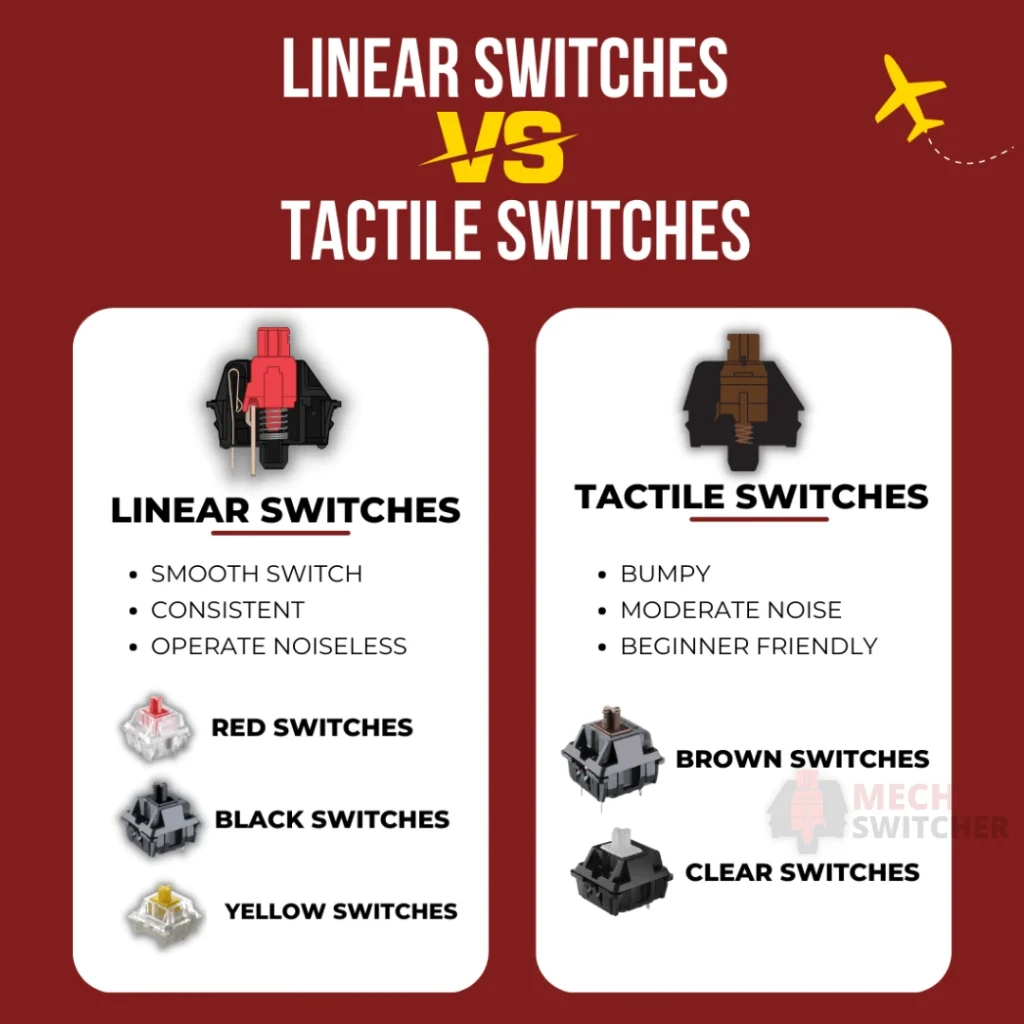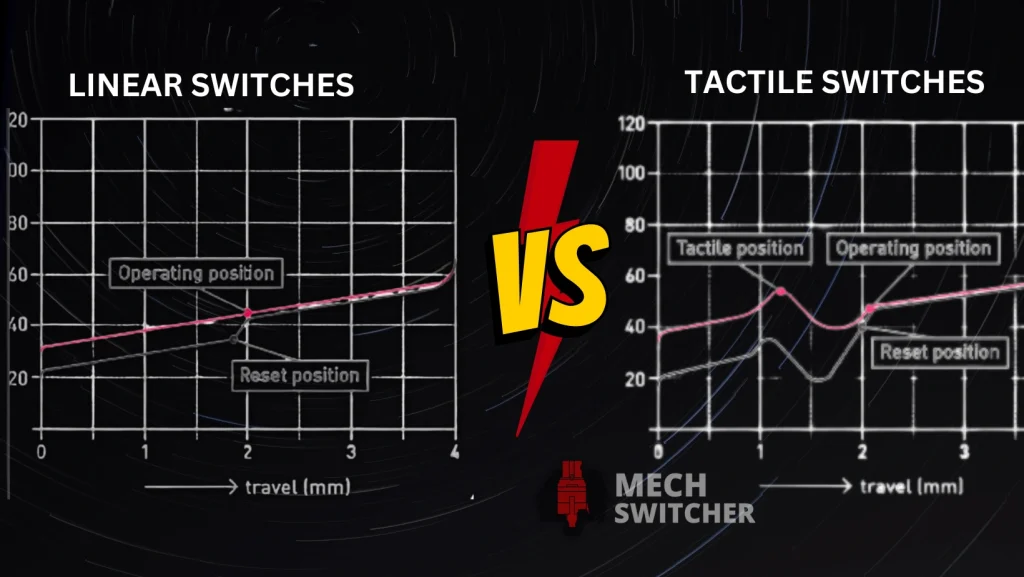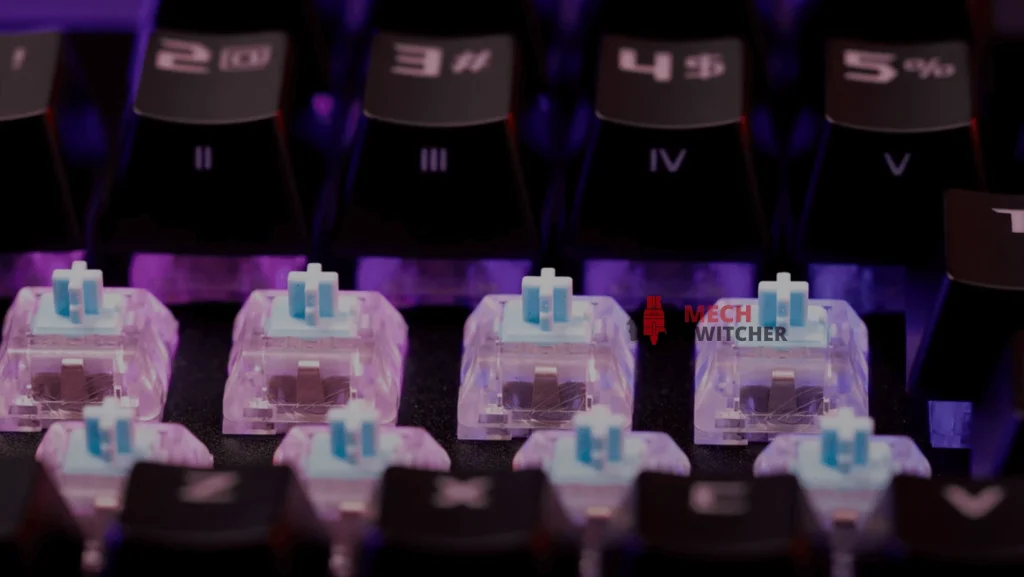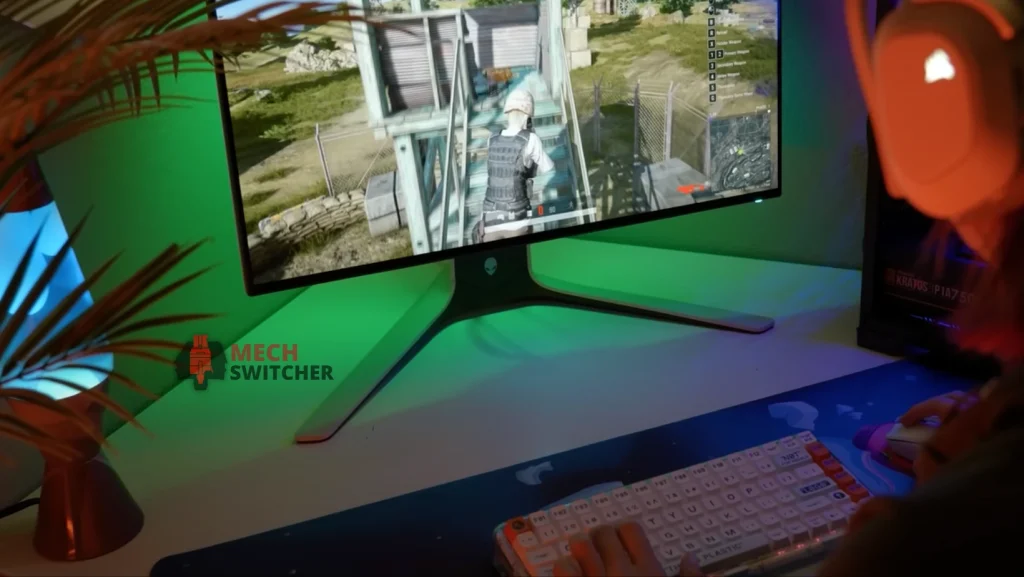LINEAR VS TACTILE SWITCHES FOR GAMING – DETAILED COMPARISON

Many people consider tactile switches for gaming by their moderate operation and good tactile feedback. Still, they miss more characteristics that increase response time, keystroke speed, and performance. Also, gives a competitive edge in heavy games or much more. Here is a brief discussion on linear vs tactile for gaming, which helps to find a great option next time. Plus, I’ll clear misconceptions of both mechanical switches.
Linear vs Tactile Switches: Fully Comparison
It is impossible to tell the difference of linear and tactile, while holding them. However, they provide unique characteristics that improve performance when used with linear mechanical keyboards or tactile

There is a significant difference between linear and tactile mechanical switches, although some say linear is recommended for gaming and tactile for typing. Choosing a mechanical switch is up to you. But, people also thinks linear switches good for typing or not.
Noise Comparison
Selecting mechanical switches for gaming than linear switches as right as rain option compared to tactile switches. Because linear switches are noiseless on each keystroke while playing heavy games, you need a continuous keystroke, and tactile switches generate moderate noise that disturbs other people.
So, take a linear switch keyboard if you want a family that can’t throw your mechanical keyboard out of the house due to disturbing keypress noise. Compared to tactile switches, linear switches may have less noise because tactile switches make a clicky sound every time a key is pressed. Users can hit each key more easily if noise is added to it. The best choice for minimizing noise, however, is linear switches.
Stream content on multiple platforms, record videos, and work in public places without disturbing other people with linear switches. It is also common for the public to convert different mechanical switches into linear ones because the clicking sound frustrates them. Alternatively, if you want a linear switch with a low noise level, you can opt for the gateron red or black silent linear switches.
Can linear switches be used at work and in the office? It is best to use a mechanical switch that produces little noise for office work. Those who type quickly may find noiseless linear switches useful at work, whereas those who prefer tactile buttons may find clicky switches inconvenient. Choosing a mechanical control for your home is up to you.
Tactile Feedback
Tactile and clicky switches are famous for their small bump-free feel, but you must be serious about playing heavy games. The tactile feedback attracts newbies and gives a good feeling when typing. But they slow your speed. With linear switches, you have an edge on all switches, and professional and esport players recommend or use linear switches because there is no tactile feedback.
Because without tactile feedback, the linear switches are so fast that they help to increase keystroke speed compared to tactile switches. So, if you want to increase gaming speed and performance, leave tactile feedback while playing games.
Resistance level
Many people miss the resistance level while getting mechanical switches. A linear switch’s resistance level is much lower than that of a tactile switch. So, the resistance level depends on the type. After testing, for gaming manufacturers, famous red and speed silver linear switches have light and low levels of resistance that help to increase the keypress speed, and continuous keystrokes create less finger strain pain with linear switches.

Gateron yellow linear switches contain a medium resistance level, making them beginner-friendly for gaming, typing, and general use. On the other hand, famous brown tactile switches have medium resistance levels which aren’t optimal for gaming and slow the speed.
In fact, with linear switches, the performance and response time increase more daily than with tactile switches. Also, the clear tactile switches contain heavy resistance levels. In simple words, linear perfect or gaming or use good in typing by their resistance level, but tactile switches are good for typing and browsing.
Keystrokes Feel
While playing with linear vs tactile switches for gaming, you feel a different feel due to the manufacturer. With linear switches, the keystroke feels super smooth, and with less finger strain, consistent keystroke working. The tactile feedback on tactile switches, however, produces a slight bump feeling.
Although, after testing competitive games with tactile switches the bump keystrokes provide an efficient feel but miss the speed and quick response time, continuous keystroking surviving situations in games than bumpy feel cause finger strain. So, if you want a consistent and smooth feeling while playing competitive games and don’t want to strain your fingers more than linear switches, an ideal option for tactile mechanical switches and a bumpy feel help to give a good typing experience.
Actuation Force
The linear switches won for their actuation point (the distance that must be pressed for a key to register). It’s therefore important that the switches you use are fast and can withstand playing comparative games. Linear switches are an excellent option since the fewer actuation points and forces, the quicker the response. While the Cherry MX red linear switch and the MX brown switch have the same actuation point after testing, the Cherry MX brown linear switch has a slightly higher actuation point.
In addition, it is easy to determine the total distance a key travels down to register. Test results indicate linear switches provide a greater key travel distance than tactile or clicky switches. You can determine whether linear switches are suitable for long travel distances by considering their usefulness for different tasks and applications.
RGB
RGB is a multi-shaded backlit illumination color that refers to red, green, and blue, and it comes with certain keyboards nowadays and the bedrock of linear switches beneath the keycaps. To some extent, RGB is supported by all mechanical switches. But after detailed testing, linear, tactile, and clicky switches were. So, it’s great to note that linear switches offer RGB options.

Plus, If you want a quality linear switch mechanical keyboard, consider one with RGB. The RGB keyboard will assume a better look or feel in all applications. Furthermore, the bite at the cherry with an RGB keyboard ensures you can control the lights when you don’t need them.
Key Advantage of Linear vs Tactile Switches for gaming
Beginners especially forget the key advantage of mechanical switches, and while electing linear or tactile switches. You need to understand the key advantage while playing games.
Let me get straight, linear switches are famous because their speed key advantages mean the actuation force, resistance level, and keystrokes’ smooth feel make it faster than tactile or clicky switches. Which is a competitive edge in gaming.
On the other hand, tactile switches are popular for their accuracy because sometimes newbies can be uncomfortable with mechanical switches for typing. The accuracy of tactile switches helps to avoid keypress accidents more than linear switches.
Linear vs Tactile switches for gaming test
According to testing, linear switches are preferred for gaming over tactile ones. In addition, mechanical linear switches provided by reds, blacks, and silvers provide very smooth keystrokes. Even so, the speed and response level of switches increases rapidly.

A tactile switch can frustrate gamers who play competitive games because it slows down and slows down the gameplay. And it only feels relaxed occasionally. Because the key doesn’t need to be registered, tactile switches are perfect for FPS games. Instantly, that key is tapped as fast as possible.
A linear switch requires a high amount of force to operate, whereas a tactile switch requires a low amount of force. There is less finger strain when using linear switches for gaming. Additionally, some games require minimal actuation. So, Cherry MX red switches are highly regarded for their low actuation, speed, and smoothness, making gaming more comfortable.
Typing Testing
Both have linear edge switches compared to a clicky or tactile switch. The tactile switches are a delight for me since I type a lot. In addition, mechanical tactile switches in brown and clear provide useful feedback and small bumps with moderate sound. By contrast, linear switches provide no tactile feedback or bumps.
A plastic stem designed to enhance typing performance makes gateron link black switches suitable for typing. The tactile switch lets you instantly change keys when you feel a bump. You don’t have to wait for the key to bottom out once the keypress registers. It will therefore be easier for you to type faster.
FAQ – FREQUENTLY ASKED QUESTIONS
Final Takeaways
After deep testing, linear switches are the perfect option for gaming, and tactile switches support typing but need to be faster. Cherry MX red and speed silver linear switches are the best option for gaming due to resistance level, and Cherry MX brown and clear tactile switches are good for typing and general use. If you confuse now, then linear are perfect for their consistent and smooth keystroke feel, quiet operation, actuation force, and enhanced performance day after day in games than tactile or clicky switches.
